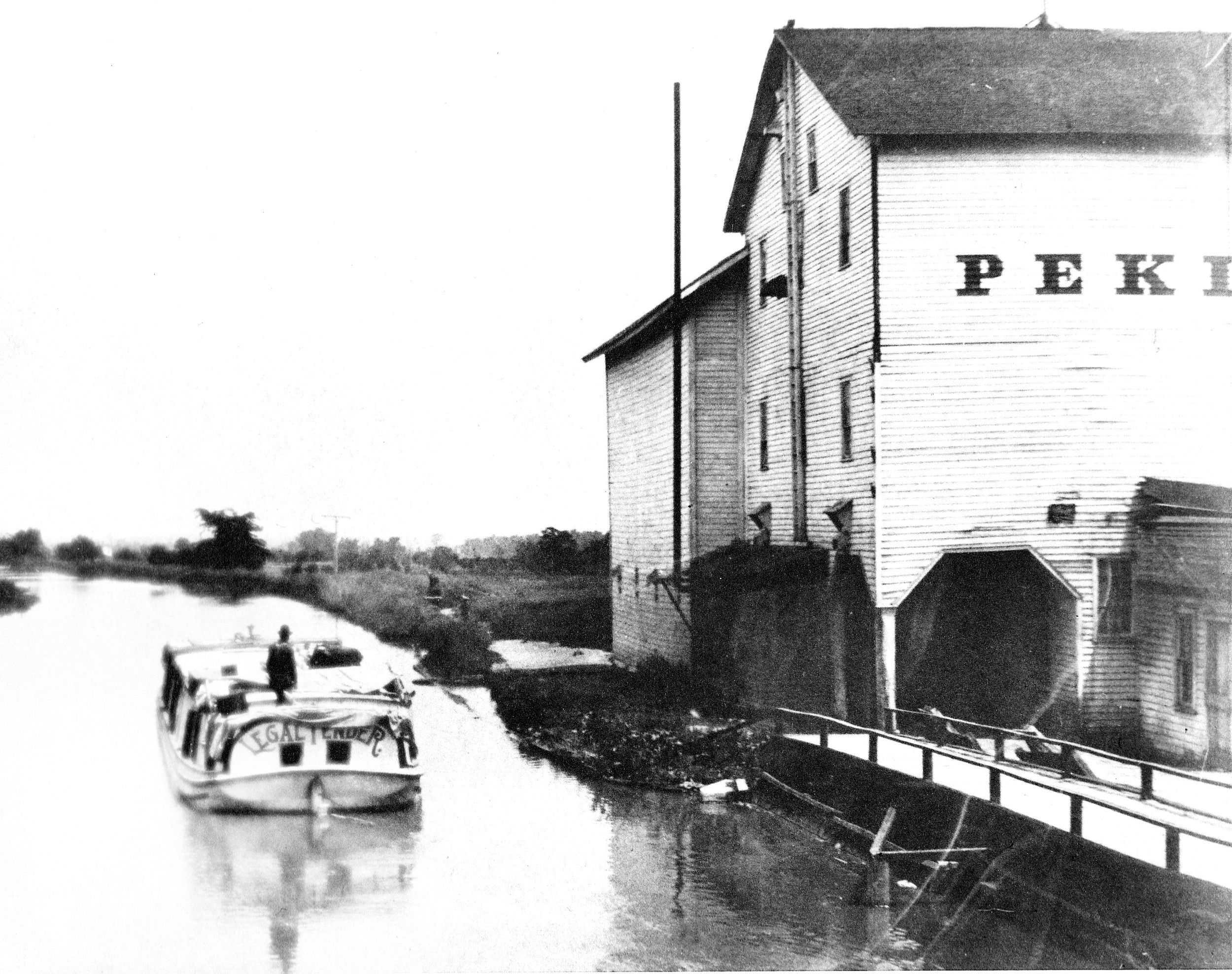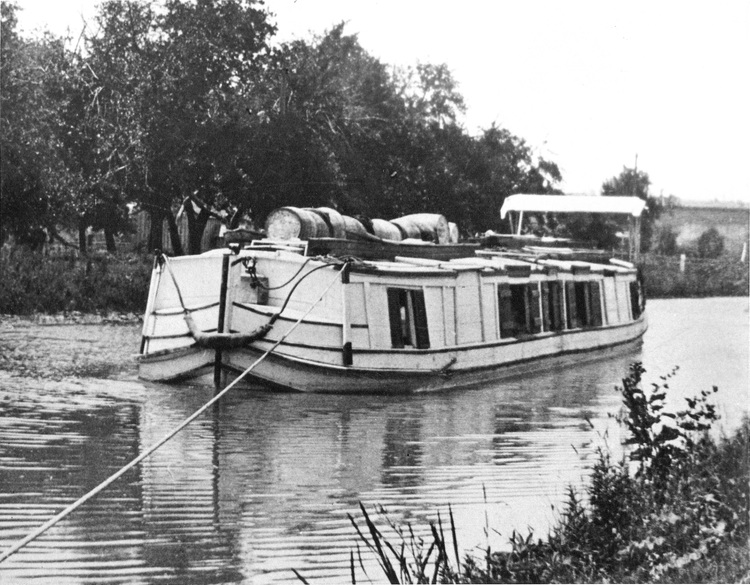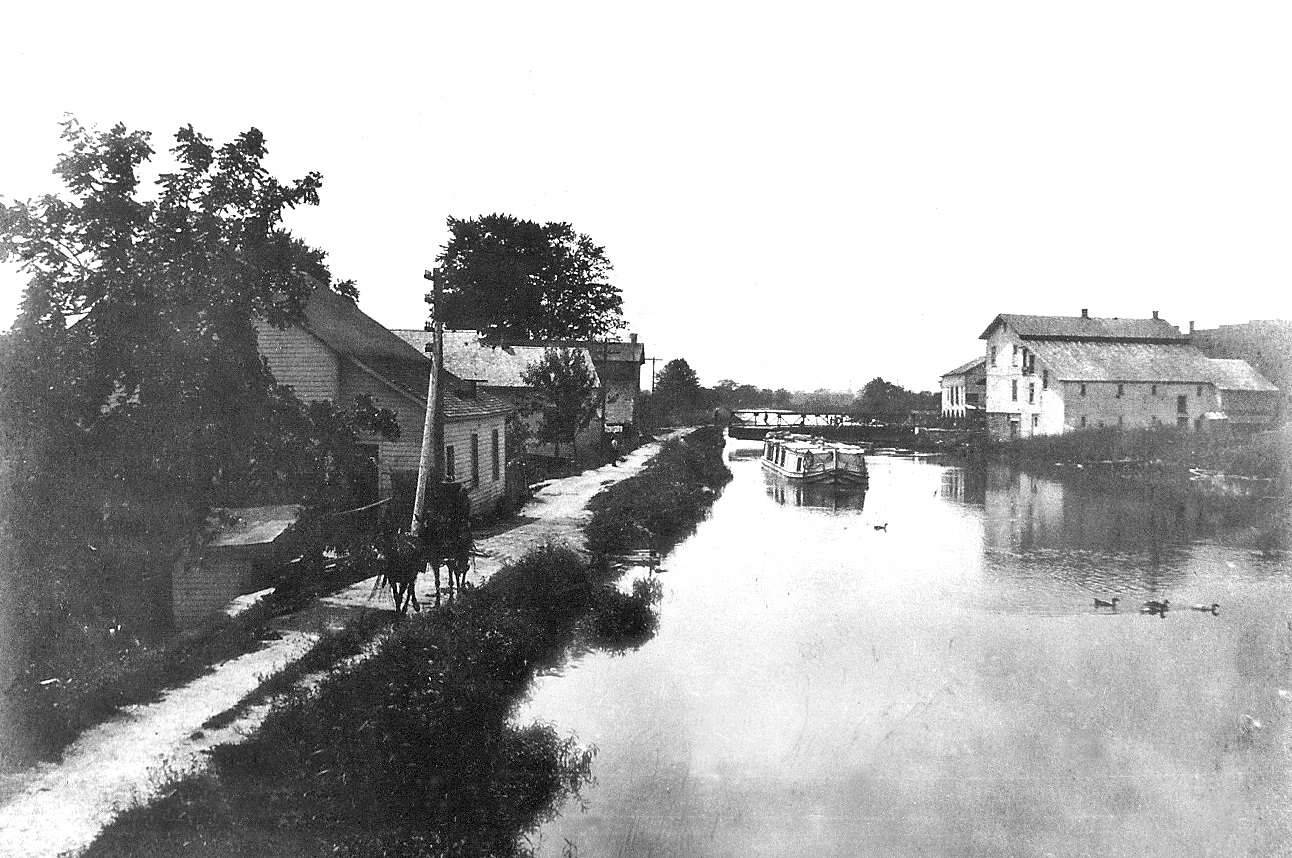Long before fur traders, soldiers and settlers came to the Maumee Valley, the river and its banks were studded with Indian villages. In 1794, General Anthony Wayne marched his legion down along the river to the site the French called Roche de Boeuf, a large island outcropping of natural limestone where the Ottawa Indians held their councils. Opposite it on the west bank Wayne constructed Fort Deposit in preparation of an encounter with the Indians, which became known as the battle of Fallen Timbers. For three days following his victory, Wayne sent his troops all along the river burning Indian settlements and cornfields. At the Treaty of Greenville in 1795 twelve tribes signed their submission and the Ohio territory opened to white settlement.

Enter John Pray of Rhode Island in 1818.
One of the first to come to this area was John Pray of Rhode Island in 1818 after he had served in the War of 1812. He built a dam across the river to Granger Island and in 1821 constructed a water-powered grist mill, the first on the lower Maumee and the location became known as Pray’s Falls. He later added a carding mill and sawmill. In 1831 he laid out the village of Waterville with the first 50 lots. River Road was then called Main Street. He built the Columbian House, a stagecoach inn, in 1828 and expanded it with a three-story addition in 1837 featuring a ballroom on the third floor and the town’s jail on the second. For years it was the commercial and social center of Waterville and the site of the first post office. It is recognized as one of the finest examples of Federal style architecture.
A New Era for Waterville in 1843.
The year 1843 ushered in a new era for Waterville with the opening of the Miami and Erie Canal. Boats transported farm products, commercial goods and people from Toledo to Cincinnati, and it joined a branch of the Wabash and Erie to Indiana. In the peak year of 1851 400 boats were operating. Hotels and stores opened along its banks. The Pekin Mill was built in 1846 where the canal met Mechanic Street. The commercial section of town gradually moved to Third Street. The village was incorporated in 1882. The canal also served as a source of entertainment for local residents. A favorite spot for ice skating from Thanksgiving to spring thaw, it was not uncommon for some to skate to Grand Rapids and back in an evening. After skating, young and old alike would gather around the big old stove at the back of Rupp’s Store to warm up. In summer the canal was a favorite spot for fishing and boating.

Roche de Boeuf and Icon of Waterville History.
In 1845, the United States Government transported soldiers on the canal from Toledo to Cincinnati for the Mexican War. Until 1852, the canal was regarded as part of a great military highway between New York and New Orleans. Canal operations ceased in 1909, as railroads and automobiles became faster and cheaper means of travel. During the 1930’s and 1940’s the canal bed was filled in to become the Anthony Wayne Trail, U.S. Route 24.
The news in 1907 that the Lima-Toledo Traction Company was planning an interurban electric train line through the village brought great excitement. Rail cars would reach Toledo from Waterville in the miraculous time of 20 minutes. The longest reinforced concrete bridge would be built at the historic site of Roche de Boeuf. In spite of assurances that the historic rock would not be desecrated in any way, it soon became apparent that a portion of the rock would be blasted away for a bridge support. The outraged citizens felt betrayed. As time went on tempers cooled and the beauty of the Roman aqueduct design became a favorite of artists and picnickers alike. For 30 years the red interurban cars raced across the bridge,one actually winning a race against an airplane in 1930, rocketing along at nearly 100 miles an hour. In 1937 the railway went out of business. Today, the grand old bridge stands as an icon of Waterville history and a testament to engineering innovation.
A Bright Future for Waterville.
Like many other towns, modes of transportation have played a major role in the evolution of Waterville. With the completion of the Route 24 Bypass in the year 2012, the village landscape will be transformed again. Without truck traffic congestion, the restored historic downtown downtown will prosper, while new commercial development will locate near the bypass. Waterville honors its colorful past, but looks toward a bright future.

And the Story Continues…
You can learn more by contacting the Waterville Historical Society.
